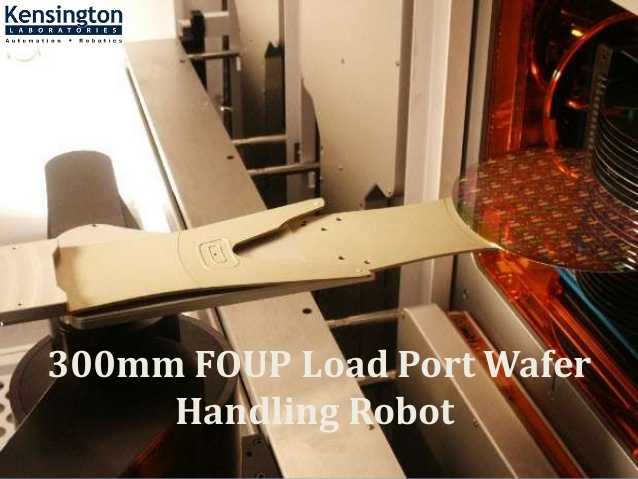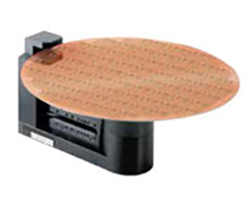Role of Wafer End Effectors in Precision Semiconductor Manufacturing
Wafer-end effectors serve a crucial part in the complex world of semiconductor fabrication, where accuracy is essential. These specialized tools, the unsung heroes of the production process, provide the accurate and secure handling of delicate silicon wafers. Let's look at how wafer end effectors contribute to precision motion control during the production of semiconductors.
What are Wafer End-Effectors?
Often referred to as wafer handling end effectors, wafer end effectors are specialized instruments used in semiconductor manufacturing to guarantee precision motion control. Whether mounted on automated systems or robotic arms, their main purpose is to safely grasp, raise, and move fragile silicon wafers during manufacturing. Their end effectors handle the wafers with precision and gentleness, minimizing the risk of contamination or damage. Wafers are essential components in the construction of integrated circuits.
The Importance of Precision Motion Control
The core of wafer handling is precision motion control. It entails precisionly coordinating the robotic arm or system's acceleration, speed, and movement while it carries the wafer end effector. To guarantee that wafers are moved between process chambers, testing stations, and other equipment precisionly and without error, this degree of control is necessary.
To provide the best results, wafer end effectors collaborate with precision motion control systems. The materials, sensors, and gripping mechanism of the end effector must all be carefully built to work in harmony with the capabilities of the motion control system. By reducing the possibility of breakage, scratches, or particle contamination, this synergy makes sure that wafers are handled with the greatest care.
Types of Wafer End Effectors
Wafer end effectors are essential parts of precision motion control systems and are available in a variety of configurations to meet the unique requirements of semiconductor production for wafer handling.
Mechanical Grippers:
These sturdy and dependable end effectors firmly grab wafer edges with mechanical fingers or jaws to guarantee accurate movement and positioning.
Vacuum End Effectors:
These end effectors are perfect for delicate wafers because they use vacuum pressure to raise the wafers using Bernoulli grippers or suction cups, reducing the possibility of damage during transfer.
Electrostatic End Effectors:
These end effectors are ideal for tiny or fragile wafers because they use electrostatic forces to provide a soft, controlled grasp for accurate handling.
Edge Grippers:
These are made so that they do not come into touch with the surface of the wafer. This allows them to safely grab the edges of the wafer and move it between cassettes or carriers throughout the production process.
The wafer-handling end effector selection depends on several factors, including wafer size, fragility, and specific manufacturing process requirements. Selecting the appropriate end effector and integrating it with an accurate motion control system enable semiconductor manufacturers to ensure safe and efficient wafer handling, which will ultimately lead to higher yields and improved product quality.
Advanced Features and Innovations
In order to satisfy the exacting requirements of precision motion control in semiconductor production, wafer end effectors are constantly developing. These innovations optimize wafer handling and contribute to higher yields and product quality.
Force Sensing:
Advanced sensors integrated into wafer handling end effectors monitor the grip force applied to the wafer, preventing over tightening or slippage that could cause damage. This real-time feedback ensures a secure yet gentle hold throughout the handling process.
Wafer Detection:
Precision motion control is further enhanced by wafer detection sensors. These sensors validate the wafer's existence and proper orientation before the end effector interacts, avoiding costly mistakes and assuring smooth operation.
Particle Reduction:
In semiconductor production, contamination management is crucial. Wafer end effectors increasingly include technologies like as ionizers and particle filters to reduce the possibility of introducing particles onto the wafer surface, hence preserving product integrity.
Integrated Alignment:
Some end effectors include inbuilt alignment devices to guarantee that the wafer is accurately placed on the target equipment. This real-time adjustment capability removes the need for manual intervention and lowers the likelihood of misalignment issues.
These enhanced characteristics, together with precision motion control systems, make wafer end effectors vital tools in modern semiconductor production, boosting efficiency, dependability, and, ultimately, the fabrication process's success.
The Future of Wafer End Effectors
Wafer-end effector design and functionality will advance along with semiconductor technology. Future developments in materials, sensors, and gripping mechanisms should result in even more accuracy, speed, and dependability while handling wafers. Optimizing end effector performance and adjusting to evolving wafer properties may potentially benefit from the incorporation of artificial intelligence and machine learning techniques.
In conclusion, wafer end effectors are essential parts of the complex dance of precision motion control that supports the production of semiconductors. Their capacity to handle wafers precisionly and securely depends on maintaining product quality and output. Wafer-end effectors play an increasingly important role in assuring the perfect production of the chips that power our contemporary world as the semiconductor industry continues to push the boundaries of complexity and downsizing.




Comments
Post a Comment